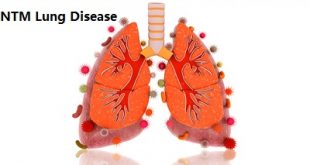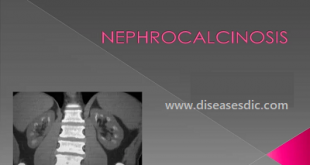What are Neuroendocrine Tumours?
The neuroendocrine system is a network of glands and nerve cells that make hormones and release them into the bloodstream. These hormones help control normal body functions, for example digesting food. Neuroendocrine cells are found throughout the body, but mainly in the gastro-intestinal tract (including large bowel and small bowel), pancreas and lungs. Neuroendocrine tumours (also referred to as NET) are an uncommon type of tumour that forms in these cells. The type is generally defined by where the abnormal cells come from and can range from low grade (slow growing) to high grade (fast growing). Neuroendocrine tumours that produce extra amounts of hormones can cause certain symptoms and are referred to as functional tumours. However, not all neuroendocrine tumour produce extra hormones (non-functional).
Types of Neuroendocrine Tumours
There are many types of NETs. They’re usually named after the type of cell where they grow, or the hormone they make.
Carcinoid tumors can form in many areas of your body, but they’re most common in the cells of the digestive system — the stomach, small intestines, appendix, and rectum. They can also form in the lungs or a small organ behind the breast bone called the thymus. More rarely, they grow in the pancreas, kidneys, ovaries, or testicles.
These tumors can release different types of hormones, which can affect how you feel. Doctors call these groups of symptoms carcinoid syndrome.
Pancreatic NETs grow in your pancreas. There are a few kinds of them:
Insulinomas are the most common type. Their cells make insulin, the hormone that controls blood sugar levels. Most of the time, they’re not cancerous.
Glucagonomas make glucagon, a hormone that raises your blood sugar level. About half of them are cancerous, and they often spread to other parts of your body.
Gastrinomas make the hormone gastrin, which helps you digest food. These tumors can happen if you have a rare disorder called Zollinger-Ellison syndrome. About half of these gastrinomas are cancerous, and they often spread easily in the body.
Somatostatinomas make too much of a chemical called somatostatin that affects how your body makes other hormones.
VIPomas make a hormone that triggers the release of other hormones, called vasoactive intestinal peptides (VIP). Most VIPomas are cancerous.
Some other types of NETs include:
Medullary carcinoma. It shows up in your thyroid gland, an organ that’s on the base of your neck. This tumor grows in cells that make a hormone that affects the levels of calcium in your body.
Pheochromocytoma. This grows in cells of your adrenal glands, which sit above your kidneys. It makes the hormones adrenaline and noradrenaline, which can increase your heart rate and blood pressure. Usually these tumors are not cancerous.
What are the causes and risk factors of NETs?
There is no one cause or specific risk factor associated with NETs. There are, however, factors that may raise a person’s risk for developing a NET, including:
Inherited syndromes: Multiple endocrine neoplasia type 1 (MEN1) is a hereditary condition associated with certain types of NETs, including NETs, GI tract NETs, and pancreatic NETs. Other hereditary conditions related to NETs include Von Hippel-Lindau syndrome, neurofibromatosis type 1, multiple endocrine neoplasia type 2 (MEN2), and tuberous sclerosis complex.
Other medical conditions: Certain diseases can put people at greater risk of developing specific types of NETs. For example, people with diseases that damage the stomach and reduce acid production have a greater risk of developing a NET of the stomach.
Environment and diet: Based on known data, there is no connection between NETs and the environment or diet.
Symptoms
Neuroendocrine tumors don’t always cause signs and symptoms at first. The symptoms you might experience depend on the location of your tumor and whether it produces excess hormones.
In general, neuroendocrine tumor signs and symptoms might include:
- Pain from a growing tumor
- A growing lump you can feel under the skin
- Feeling unusually tired
- Losing weight without trying
Neuroendocrine tumors that produce excess hormones (functional tumors) might cause:
- Skin flushing
- Diarrhea
- Frequent urination
- Increased thirst
- Dizziness
- Shakiness
- Skin rash
What are complications of Neuroendocrine tumors?
Complications of Neuroendocrine tumors include:
- Low blood pressure (hypotension)
- Increased risk for strokes, deep venous thromboses (DVT), and other clotting disorders
- Gastrointestinal bleeding
- Right-sided heart failure
- Liver problems
- Acute renal failure (infrequent)
- Bowel obstruction (rare)
- Metastasis
Getting a Diagnosis
When you see your doctor, they’ll give you a physical exam, and they’ll want to hear about how you’re feeling. They might ask you questions like:
- How long have you been feeling this way?
- Do you have any pain? Where?
- How is your appetite?
- Have you gained or lost any weight?
- Do you feel weak or more tired than usual?
- Do you have any skin rashes?
- Do you have any medical conditions?
- Are there any illnesses that run in your family?
Your doctor can use a few different tests to check for a tumor in your body. You might get:
Blood and urine tests. They check the levels of hormones in your body to see if they’re too high or too low.
CT scan. It’s a powerful X-ray that makes detailed pictures inside your body.
MRI. It uses powerful magnets and radio waves to make pictures of your organs.
Octreotide scan. In a hospital, you’ll get a shot of a small amount of a radioactive liquid through an IV. Then, you’ll lie down in a scanner that can make images of your insides. The liquid has a drug called octreotide that will stick to cells on the surface of most NETs. The radiation in the fluid helps doctors see those cells on the picture from the scanner. You’ll get two scans over 2 days, but you won’t have to spend the night in the hospital. Each scan can take up to 3 hours, but it won’t hurt.
X-ray. It uses radiation in low doses to show the inside of your body.
Biopsy. Your doctor will take a small piece of tissue from your body and look at it under a microscope to check for tumor cells. They may use a CT scan to help them find the right area. Or they may use a thin, flexible tube with a small camera, called an endoscope, to look at the lining of your digestive tract. You might be asleep or awake during the procedure, but you’ll get medicine to make you more comfortable.
Endoscopy. In this test a flexible tube with a camera on the end (endoscopy) will be inserted, under sedation, down the throat into the stomach or the anus and large bowel to view your gut.
Bronchoscopy. For a bronchoscopy, a thin, tube-like instrument with a light and lens for viewing (bronchoscope) is inserted through the mouth or nose to view your lungs.
Echocardiogram. An echocardiogram is a painless ultrasound which examines your heart valves which can sometimes be affected by NETs. This procedure takes around 30-60 minutes.
Molecular testing. Your doctor checks the sample of the tumor from the biopsy for certain genes, proteins, and other substances. The results help them decide what kind of treatment you need.
Are there grades of Neuroendocrine Tumors?
Yes, healthcare providers use a grading system to create your treatment plan. They consider factors such as how quickly your cancerous cells divide and whether your cancerous cells look more like healthy cells than cancerous cells when viewed under a microscope. Understanding the staging and grading process might be helpful information as you and your provider discuss treatment plans.
What are NETs grades?
- Grade 1 (low-grade tumor): These cells divide at a low rate and are growing slowly.
- Grade 2 (intermediate-grade tumor): These cells divide at an intermediate rate.
- Grade 3 (high-grade tumor): These cells divide at a fast rate and therefore grow quickly.
NETs are also evaluated by degrees of differentiation. Those are:
- Well-differentiated neuroendocrine tumor: Your cells look more like healthy cells than cancerous cells.
- Poorly-differentiated neuroendocrine tumor: Your cells look less like healthy cells and more like cancerous cells. Poorly-differentiated cells are then subdivided into small-cell and large-cell tumor classes.
Treatment
The treatment options for your neuroendocrine tumor will depend on the type of tumor, its location, and whether you’re experiencing signs and symptoms of excess hormones produced by the tumor.
In general, neuroendocrine tumor treatment options might include:
- Surgery. Surgery is used to remove the tumor. When possible, surgeons work to remove the entire tumor and some of the healthy tissue that surrounds it. If the tumor can’t be removed completely, it might help to remove as much of it as possible.
- Immunotherapy. These treatments use the drug interferon, which helps stimulate the immune system.
- Chemotherapy. Chemotherapy uses strong drugs to kill tumor cells. It can be given through a vein in your arm or taken as a pill. Chemotherapy might be recommended if there’s a risk that your neuroendocrine tumor might recur after surgery. It might also be used for advanced tumors that can’t be removed with surgery.
- Targeted drug therapy. Targeted drug treatments focus on specific abnormalities present within tumor cells. By blocking these abnormalities, targeted drug treatments can cause tumor cells to die. Targeted drug therapy is usually combined with chemotherapy for advanced neuroendocrine tumors.
- Peptide receptor radionuclide therapy (PRRT). PRRT combines a drug that targets cancer cells with a small amount of a radioactive substance. It allows radiation to be delivered directly to the cancer cells. One PRRT drug, lutetium Lu 177 dotatate (Lutathera), is used to treat advanced neuroendocrine tumors.
- Medications to control excess hormones. If your neuroendocrine tumor releases excess hormones, your doctor might recommend medications to control your signs and symptoms.
- Radiation therapy. Radiation therapy uses powerful energy beams, such as X-rays and protons, to kill tumor cells. Some types of neuroendocrine tumors may respond to radiation therapy. It might be recommended if surgery isn’t an option.
- Palliative care. In some cases of neuroendocrine tumours, your medical team may talk to you about palliative care. Palliative care aims to improve your quality of life by alleviating symptoms of cancer. As well as slowing the spread of neuroendocrine tumours, palliative treatment can relieve pain and help manage other symptoms. Treatment may include radiotherapy, chemotherapy or other drug therapies.
Other treatments might be available to you depending on your particular situation and your specific type of neuroendocrine tumor.
Preventing neuroendocrine tumours
As the causes of most neuroendocrine tumours are not understood there is no prevention advice specific to this disease.
 Diseases Treatments Dictionary This is complete solution to read all diseases treatments Which covers Prevention, Causes, Symptoms, Medical Terms, Drugs, Prescription, Natural Remedies with cures and Treatments. Most of the common diseases were listed in names, split with categories.
Diseases Treatments Dictionary This is complete solution to read all diseases treatments Which covers Prevention, Causes, Symptoms, Medical Terms, Drugs, Prescription, Natural Remedies with cures and Treatments. Most of the common diseases were listed in names, split with categories.







